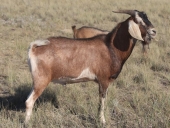Timothy Norton wrote:I'm not exactly sure if my interpretation is correct but it may be more genetics than any other factors that might influence the birds health. The breed Golden Comets has some reports of being susceptible to neoplasia floating around the interwebs. Perhaps a different breed of chicken or at least different line of genetics might be something to consider?
I agree that there may be something to be said for genetics. If it were multiple breeds experiencing this I would question that theory, but I know from experience that Golden Comets can be prone to health issues. I had some several years ago, and whoever wasn't culled had died by the age of four. It was almost like clockwork. A number of high laying hybrids (like the Comets) experience liver failure before or at 4 years old. So at least that problem is genetic.
In sheep, at least, we've experienced a definite connection to the genetics. We brought in several new sheep last year that came with pneumonia. We're so dry that we don't usually get pneumonia, but this spring at lambing time we had probably half the lambs get it, and quite a few die. The connection? Genetics. One ram had every one of his lambs get it, and while only one died, 2/3 of his remaining lambs took months to recover. Another ram only has one surviving lamb. Interestingly enough, another ram only had 2 of his lambs get sick, and they recovered quickly. Genetics played a huge role in the outcome of the individual lamb's health.






